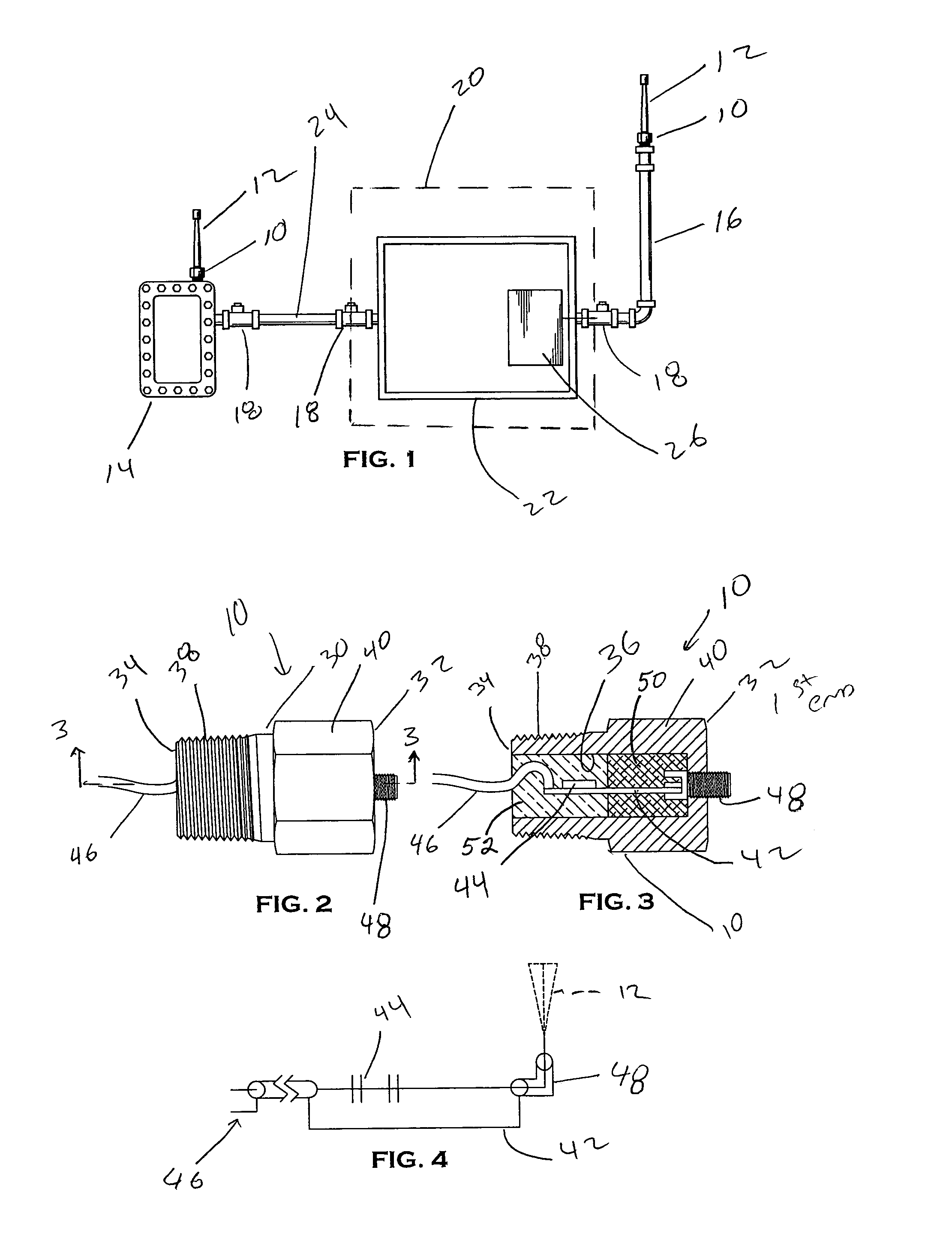Antenna connector for hazardous area
a technology for connecting antennas and hazardous areas, applied in the direction of antenna details, antennas, basic electric elements, etc., can solve the problems of high inflexibility, high cost, time-consuming, and laborious, and achieve the effect of simple, inexpensive, and quick matter, and easy and quick connection
- Summary
- Abstract
- Description
- Claims
- Application Information
AI Technical Summary
Benefits of technology
Problems solved by technology
Method used
Image
Examples
Embodiment Construction
[0015]FIGS. 1–3 show an antenna fitting 10 for connecting an antenna 12 to an electrical enclosure 14 or to an electrical conduit 16. As discussed in more detail below, FIG. 3 shows a more detailed view of the antenna fitting 10 made in accordance with the present invention.
[0016]Referring now to FIG. 1, the area inside the dotted rectangle 20 represents an electrically safe area classification environment, while the area outside of the dotted rectangle represents an electrically hazardous area classification environment. Thus, the electrical enclosure 22 inside the safe area environment may be a conventional electrical enclosure, while the enclosure 14 is an explosion-proof enclosure 14 for use in an electrically hazardous area classification environment. As may be appreciated from this schematic, a standard antenna 12 may be mounted directly to the enclosure 14 via the antenna fitting 10 without the need for additional potted fittings such as the potted fittings 18 shown elsewhere...
PUM
 Login to View More
Login to View More Abstract
Description
Claims
Application Information
 Login to View More
Login to View More - R&D
- Intellectual Property
- Life Sciences
- Materials
- Tech Scout
- Unparalleled Data Quality
- Higher Quality Content
- 60% Fewer Hallucinations
Browse by: Latest US Patents, China's latest patents, Technical Efficacy Thesaurus, Application Domain, Technology Topic, Popular Technical Reports.
© 2025 PatSnap. All rights reserved.Legal|Privacy policy|Modern Slavery Act Transparency Statement|Sitemap|About US| Contact US: help@patsnap.com


